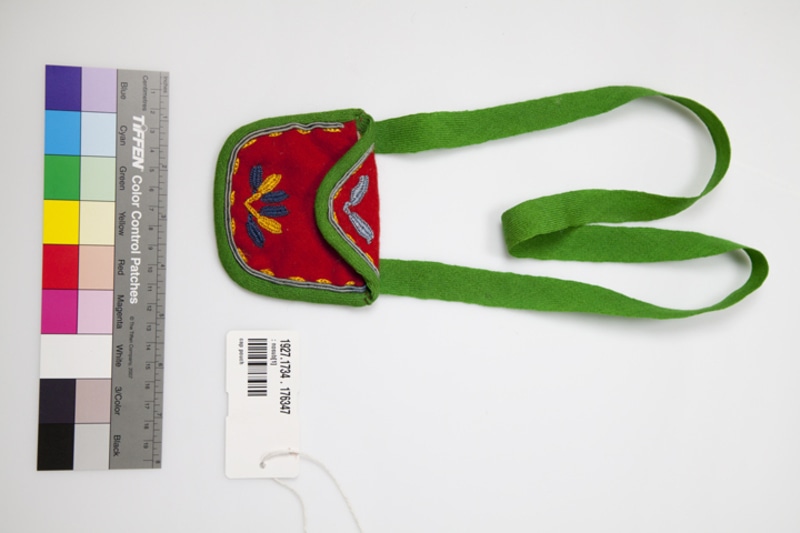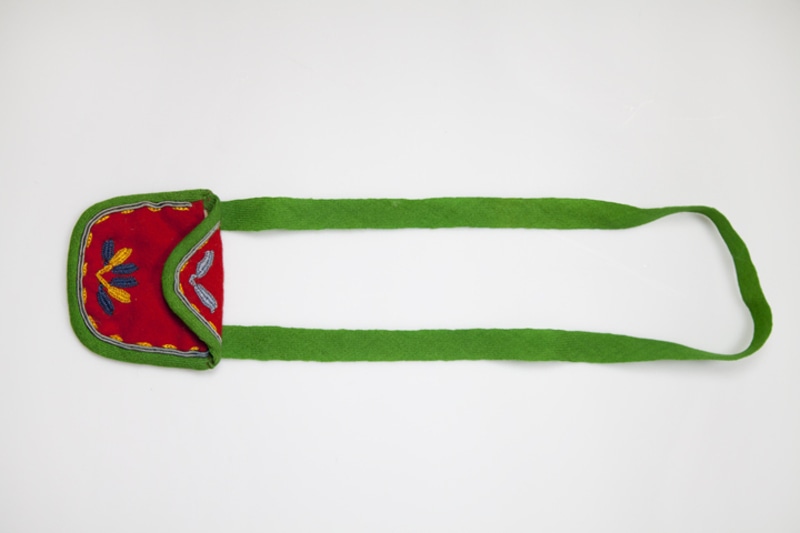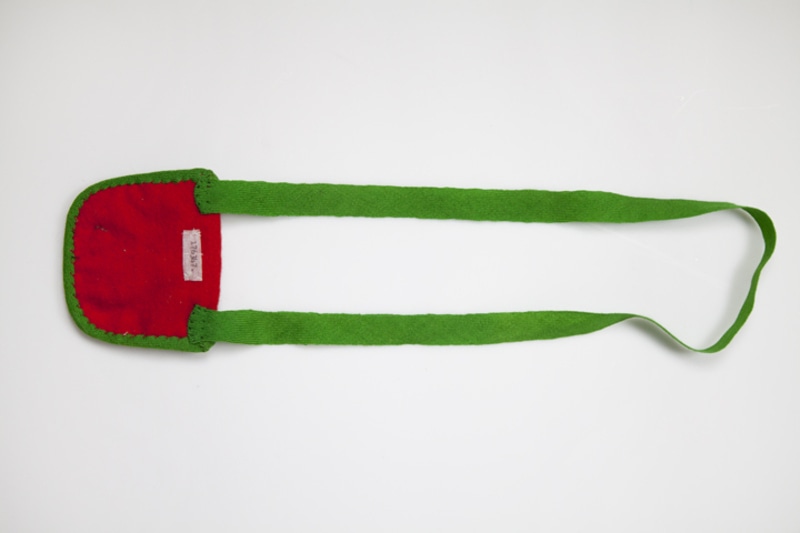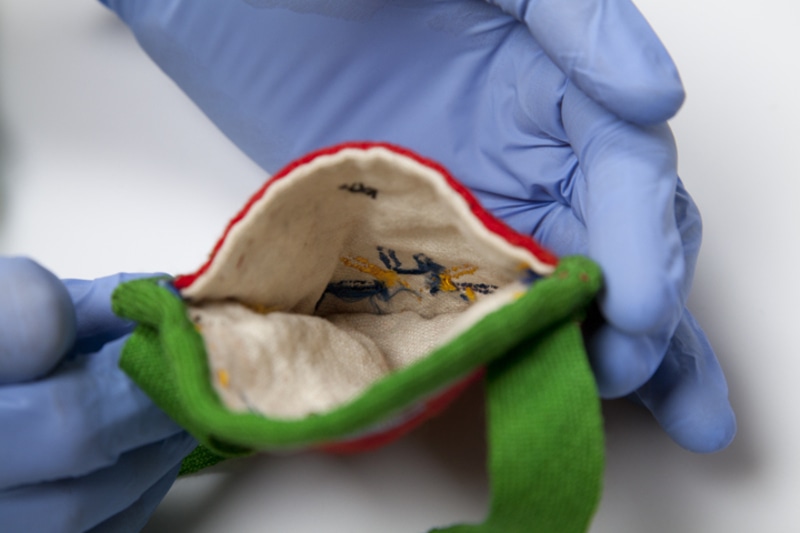cap pouch Item Number: 1927.1734 . 176347 from the The Field Museum




Citations From Vanstone (1982) Article
« Also associated with percussion firearms were cap pouches, which were large enough for the insertion of two fingers (Speck, 1935, p. 213). The collection contains three, all of which are highly decorated. One is made of red wool felt with green cotton tape binding and a strap of the same material. There is light blue cording around the inner edge of the binding. The flap closes with a snap and the front is ornamented with embroidered floral designs in blue, purple, and yellow cotton thread (fig. 22d). »
Vanstone, James W. "The Speck Collection of Montagnais Material Culture from the Lower St. Lawrence Drainage, Quebec." Fieldiana. Anthropology. New Series, No. 5 (October 29, 1982), p.12, fig 22d (p.50).
« Speck (1935, pp. 190-191) has noted that for the Montagnais, the symbolic pictorial representation of a plant or animal was equivalent to the actual plant or animal and those portrayed were believed to come under the control of the individual human spirit. Dreams played a major part in suggesting the relationship between specific animals or plants and an individual. The spirit was strengthened by having its dream promptings obeyed and success in subsistence activities was thereby assured. »
Vanstone, James W. "The Speck Collection of Montagnais Material Culture from the Lower St. Lawrence Drainage, Quebec." Fieldiana. Anthropology. New Series, No. 5 (October 29, 1982), p.10.
Translation Of Citations From Vanstone (1982) Article
« Des étuis à capuchon sont aussi associés avec les armes à percussion, et ils sont assez larges pour y insérer deux doigts (Speck, 1935, p. 213). La collection en contient trois, tous très décorés. Une est faite de feutre de laine rouge avec une attache de ruban de coton vert et une bandoulière du même matériel. Le rabat se ferme avec un bouton pression et le devant est décoré avec motifs floraux bleus, mauves et jaunes brodés de fil de coton (fig. 22d). »
Vanstone, James W. "The Speck Collection of Montagnais Material Culture from the Lower St. Lawrence Drainage, Quebec." Fieldiana. Anthropology. New Series, No. 5 (October 29, 1982), p.12, fig 22d (p.50).
« Speck (1935, pp. 190-191) a noté que pour les Montagnais, la représentation symbolique picturale d’une plante ou d’un animal était équivalente à la plante ou à l’animal en question et ils croyaient que les sujets de ces représentations se retrouvaient sous le contrôle de l’esprit humain de l’individu. Les rêves jouaient un rôle majeur en suggérant des liens entre une personne et certains animaux ou certaines plantes spécifiques. L’esprit était renforcé lorsque les conseils exprimés par les rêves étaient suivis et le succès des activités de subsistance était alors assuré. »
Vanstone, James W. "The Speck Collection of Montagnais Material Culture from the Lower St. Lawrence Drainage, Quebec." Fieldiana. Anthropology. New Series, No. 5 (October 29, 1982), p.10.
Item History
- Made in Pekuakami, Lac Saint-Jean, Lake St. John, Labrador, Canada
Who
- Culture
- Montagnais
Where
- Holding Institution
- The Field Museum
- Made in
- Pekuakami, Lac Saint-Jean, Lake St. John, Labrador, Canada
Other
- Nom De L'objet
- Étui à capuchon
- Matériaux
- tissu rouge
- Ethnic Group
- Montagnais
- Collection
- Lake St. John Objects
- Provenience
- North America, Canada, Quebec, Labrador, Lake St. John